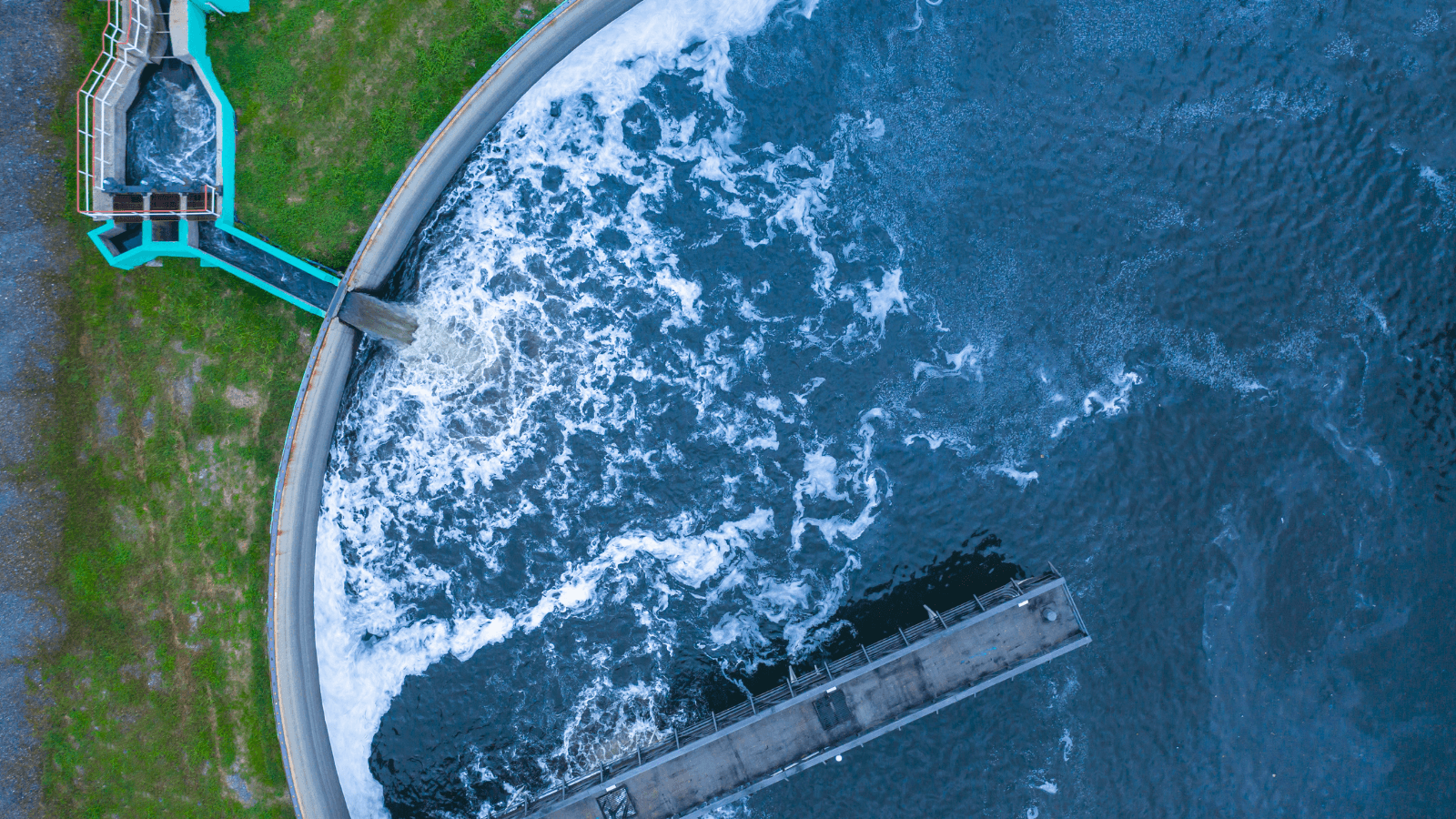Climate Smart Utilities
Applying to the recognition programme is an excellent way to gain recognition and share best practices towards becoming a Climate Smart player in the water sector. The recognition programme offers an outstanding opportunity to reflect on your Climate Smart journey, ensure visibility for your actions to an international audience, and share your aspirations to achieve a climate smart water sector. The Climate Smart Utility Case Stories highlight utility journeys.

Climate-Smart Utility Case Stories
Innovating for Impact: Sanepar’s Path to a Climate-Resilient and Sustainable Future
Sanepar is responsible for providing potable water to over 11 million people while balancing efficiency and affordability through fair tariffs, despite climate uncertainties. The utility’s operations are supported by extensive infrastructure serving a total of 3,448,897 connections through a pipeline network stretching 61,396 kilometres.
Towards a Sustainable Future: Ruhrverband’s path to Energy Neutrality and Climate Resilience
The Ruhrverband ensures water supply to 4.6 million people through eight major reservoirs and operates wastewater treatment plants for 60 municipalities. However, the utility faces significant climate change-related challenges that impact its core operations.
Establishing the Resilience of Water Supply in the Metropolitan Taipei
Taipei Water District (TWD) serves 3.7 million people with a 99.7% service coverage, directly supplying water to its primary service area, with an extended infrastructure supporting an additional 1.73 million cubic metres per day (CMD) and 0.71 million CMD, reaching more than 6 million residents in 2023.
Climate Smart Resilience: Sierra Leone’s strategies for ensuring supply
Guma Valley Water Company was established in 1961 to serve 400,000 people in the city of Freetown, the capital of Sierra Leone. Currently, its mandate has increased to serve 1,700,000 people together with the municipality of Waterloo and all the communities around the Peninsular, which were formerly under the utility company, Sierra Leone Water Company (SALWACO).
NamWater
Namibia has limited surface water resources, and most of its rivers are ephemeral, as they depend highly on the erratic and seasonal rainfall and only flow intermittently. The country therefore relies heavily on groundwater, which is often the primary source of water for both urban, rural communities and industries, including mines.
Kisumu Water and Sanitation Company Ltd (KIWASCO)
As a licensed water service provider in Kenya, Kisumu Water and Sanitation Company Ltd (KIWASCO) relies on Lake Victoria and River Kibos as its main sources of water to serve the city of Kisumu. These vital sources are increasingly impacted by global climate change and local environmental challenges. The utility faces issues such as fertiliser runoff from farms upstream into the river, an infestation of water hyacinth plants in the lake, and rising lake levels.
Baguio Water District (BWD)
The Baguio Water District (BWD) has been recognised nationally and internationally as one of the leading water utilities in the northern part of the country, Over the years, the utility has been working continuously to adapt to the changing climate by adopting initiatives that will align them with the international water community.
Musoma Urban Water Supply and Sanitation Authority (MUWASA)
Musoma Urban Water Supply and Sanitation Authority (MUWASA) is an autonomous entity responsible for managing water supply and sanitation services in Musoma Municipality, a mid-sized city located on the shores of Lake Victoria in Western Tanzania.
Aarhus Vand, Denmark
Aarhus Vand has converted wastewater into green energy at the Marselisborg wastewater treatment plant. Over the past decade, the plant has achieved an impressive 25% reduction in power consumption. Simultaneously, energy production has increased, resulting in the plant now producing 50% more electricity than it consumes.
Prague Water
In 2019, the city of Prague set out a plan for becoming a carbon-neutral metropolis. Following the example of other leading European cities, Prague adopted a ground-breaking city council decision with a goal of reducing CO2 emissions in the entire municipal area by 45% before 2030.
San Francisco Public Utilities Commission, USA
Recognised as a leader in providing reliable 24/7 water, wastewater, and power services to our customers, the San Francisco Public Utilities Commission (SFPUC) provides top quality drinking water and wastewater services to the City and County of San Francisco, wholesales water to 1.8 million customers in the Bay Area and serves 100% greenhouse gas free hydroelectric power to municipal, residential, and commercial customers.
Dunea
Dunea, a utility situated in the west of the Netherlands, is committed to providing drinking water in harmony with nature and is taking steps to become a climate smart utility.
Beijing Capital Eco-Environment Protection Group, China
Human activities have led to a sharp increase in greenhouse gases in the atmosphere, therefore, it has become the consensus of the international community to reduce total carbon emissions and achieve sustainable development. Beijing Capital Eco-Environment Protection Group Co., Ltd.
Manila Water Company
The Philippines is particularly vulnerable to climate change: increased frequency of extreme weather events, rising temperatures, extreme rainfall, and sea level rise are threatening livelihoods and water management in the country. As the sole provider of water and wastewater services in the Manila Water Concession, Manila Water Company, Inc. provides services to over seven million people, particularly in the East Zone of Metro Manila and Rizal Province, consisting of 23 cities and municipalities. Manila Water has also expanded its operations in other areas of the Philippines, Vietnam, Thailand and Saudi Arabia.
Climate Smart Water in Action at Shanghai’s Industrial Park
Shanghai Chemical Industry Park (SCIP) is located in the south of Shanghai, north of Hangzhou Bay, with a managed area of 29.4 km2. It is one of the world’s largest integrated petrochemical bases. Shanghai Chemical Industry Park Sino-French Water Development Co., Ltd. provides water supply and wastewater treatment services to SCIP, ensuring quality utility services for all the customers in the park.
Bergen Water, Norway
Like all countries across the globe, Norway is not immune to climate change. Increased precipitation and extreme weather events in the country mean that water and wastewater systems have a growing vulnerability to water-related risks, which has led to the need for adaptation approaches to be adopted.
Metro Pacific Water, Philippines
With the changing climate, flooding in the Philippines is increasing, which threatens lives and livelihoods. People do not have access to enough water for agriculture or enough clean drinking water.
Denver Water, North America
Denver Water takes its water source mainly from the Colorado River and provides water to about 25% of the state of Colorado’s population.
Frederiksberg Forsyning, Denmark
Frederiksberg Water, one of the 10 largest water utility companies in Denmark is committed to providing water and wastewater services as their core mandate. In addition, they also provide heating and cooling services.
Tucson Water, Arizona, USA
Tucson Water is committed to providing water to Arizona and its residents by diversifying water supplies. Up until the early 2000s there was a high reliance on groundwater, however the extraction of groundwater has a number of negative environmental impacts as well as safety risks (e.g., subsidence). Groundwater has been replaced by Colorado river water, remediated, and reclaimed water, as well as a small amount of rain and stormwater.
Water & Waste (Cape Town), South Africa
Over the past years, water supply in Cape town has been reliant on rain fed dams with management based on reconciling annual demand and supply system. Currently, the water supply system relies on six (6) large dams with a capacity of 900,000m3. Between 2015-2017, the city experienced three (3) consecutive years of low rainfall.
Yarra Valley Water, Australia
Yarra Valley Water utility located in southern Melbourne serves about 2 million people. The current growth acceleration in human development particularly socio economic and environmental trends for example (population, GDP, transport, fertiliser application, telecommunication) are pushing the planet beyond its boundaries. This challenge combined with climate impacts brings lots of uncertainties to cities in Australia with its associated impact on available water resources.

Need help?
Contact Our Strategy and Insights Manager
For enquiries about IWA Climate Smart Utilities initiative, please contact Charles Joseph
Subscribe to our newsletters
IWA and sector updates
to your inbox
Follow us